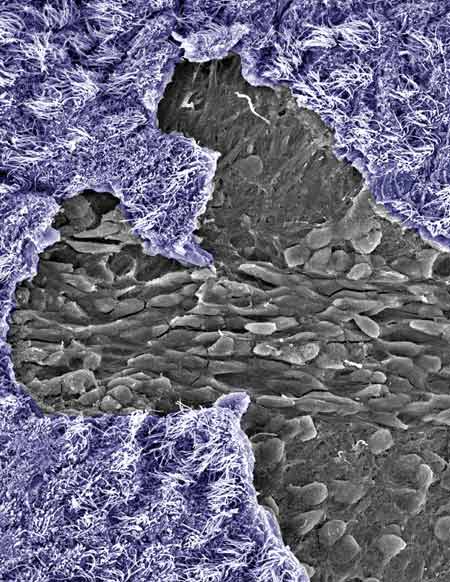The Journey of a New Brain Cell

Newborn adult brain cells travel along a neural highway from their place of birth to their final destination.
Now scientists have shown that tiny, beating, hair-like structures called cilia play an important role in helping the new cells merge onto the highway's on-ramp.
Scientists have long questioned how newborn brain cells manage to migrate long distances in the adult brain and arrive at the right place. By studying the movement of newborn neurons inside adult mouse brains, a team of international scientists figured it out.
This is the first study to show that cilia help control cell migration in the adult mouse brain as well as the developing brain. Researchers suspect the setup is similar in humans.
"Even in the very old brain there is some of this going on. It clearly happens in old animal cells," study coauthor Arturo Alvarez-Buylla of the University of California, San Francisco told LiveScience. "This is something that's going on throughout life."
Long migration
The brain is divided into two hemispheres, and inside each is a cavity, called a ventricle, filled with cerebrospinal fluid. New cells are born on the surface of the ventricle walls, which are covered with tiny cilia.
Sign up for the Live Science daily newsletter now
Get the world’s most fascinating discoveries delivered straight to your inbox.
As the cilia beat, they stir up the fluid, creating differences in the concentrations of molecules that signal direction. These molecules sink into the tissue where new cells are grown.
The new neurons react to the molecules, and begin to stream together in the same direction, like water on a low-tide beach trickling back to the ocean. They eventually arrive at the on-ramp to the highway, which takes them to the olfactory bulb, the part of the brain responsible for perceiving smell.
"This is the first study in the brain to show that cell migration depends on variation and orientation of cilia," Alvarez-Buylla said. "It shows cilia are not important only for developing brains, but for adults in these long migrations.
But why?
However, scientists don't know quite why neurons make this journey to the smell center.
"We really don't know why yet," Alvarez-Buylla said. "It's probably a process of plasticity where new cells are added and old ones are removed."
They also can't say for sure that neurons make similar journeys to other specific locations in the brain, although other non-neuronal brain cells, called glial cells, travel to other places in the nervous system.
Cilia help move stuff in other parts of the body too. They control flow of mucus and fluids in your windpipe, or trachea. They move eggs from ovaries to the fallopian tubes. They also help direct cell migration during development of a new organism, making sure cells destined to become toes and ears end up on your feet and head, respectively.
The research is detailed in the Jan. 12 issue of the online version of the journal Science.
- Adult Brain Cells Do Keep Growing
- Newfound Eye Cells Sense Night and Day
- Discovery Challenges Thinking on Key Brain Function
- Only Using Part of Your Brain? Think Again
- Study Suggests Human Brains Still Evolving









